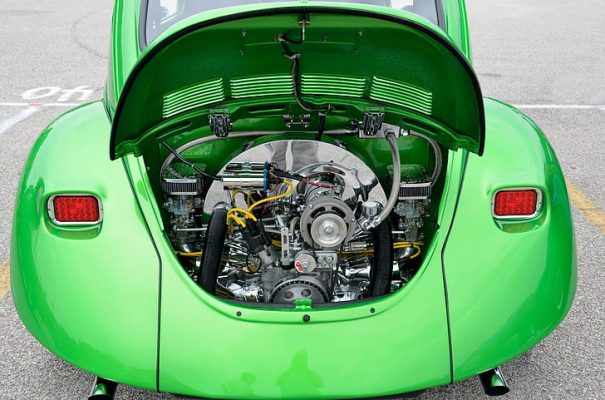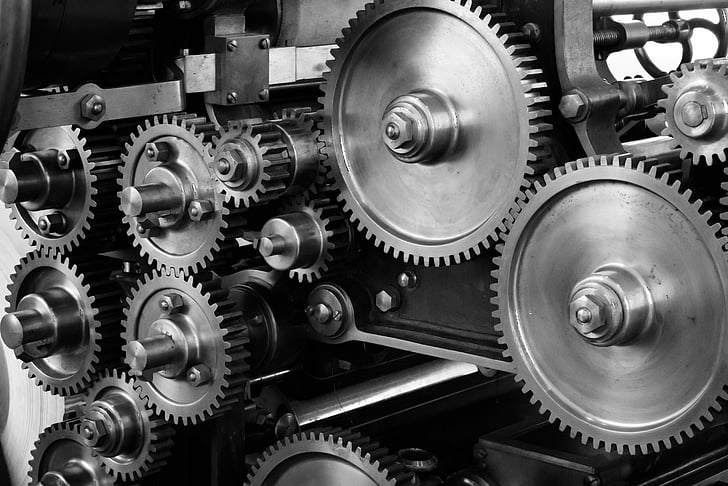How To Best Bionic Car Parts Boost Performance – 2025: By 2025, new vehicles that are being offered in the market will be built upon the ingenious concepts advanced by both innovative liquidity and risk-taking engineers.
A bionic car part is at the heart of this development — a combination of biomimicry and state-of-the-art science. These parts are no longer just demonstration activities but have translated to being an indissoluble part of the world’s most sophisticated vehicles, which improves their performance.
Emulating evolutionary patterns, bionic parts have the same extraordinary capabilities as the creations of nature, for example, a spider whose silk is tensile strong or a bird that gracefully moves through the air by flying with bionic parts. They allow for faster, more pinpoint control, a far longer life span and a higher grade of responsiveness without giving in to the elegance and the fine structure. Since these materials are both light and strong, these cars could turn into a more efficient form of travel as they would drag less and consume even less fuel. In addition to performance attributes, they also add adaptability which enables them to adapt to the changes happening in traffic flow in real time.
In 2025, bionic car parts become the image of the auto industry, which had been taken to a higher level than the mechanical limitations, waiving mindless power and creating machines that not only perceive but can also act with near-organic perfection. Form follows functionality.
The Evolution of Bionic Car Parts
Initially just visionary ideas of science fiction writers to NASA, the evolutionary process of Bionic car parts has reached a new stage in the form of an engineering triumph. They are no longer confined to research labs and theoretical models but are used to power the most advanced supercars and luxury electric vehicles.
Through the imitation of the most effective designs in nature, such as the materials that compose the bone, the elasticity of the tendons and the biomechanics of the variety of movement of the aquatic life, these parts are the result of the work of engineering experts. They are made to be the most durable and precise. Their organic design is not only set to reduce the material load but also the durability.
Being developed in such a way, they can endure the changes and easily withstand the pressure; they can, therefore, contribute to the development and the timeframe of modern vehicles as they become faster, wiser, and more tolerable, especially for the driver who is the person behind the wheel.
Defining Bionic Car Parts
Bionic car accessories are high-tech mechanical parts that imitate animals’ and plants’ natural engineering masterpieces. These parts have “morphed” the elegant features in nature due to the strength built into bones and the flexibility of muscles. The creators of these parts combine naturally with artificial materials such as composites, smart polymers, and alloys of low weight. This is the beginning of a new era for automotive performance; that is, the lighter, more robust, and more easily interchangeable parts are realized.

They go over and beyond the norm of mechanics with innovative, high-speed, resilience-enhancing technologies in order to be the best. The virtual transformation caused by bionic car parts makes machines seem like they are running effectively and consolidated with precision and power, even close to the living organism.
Materials that Make the Difference:
Lightweight Alloys
Ultra-lightweight titanium alloys provide a reduction in vehicle mass while preserving high tensile strength. As a result of this decrease, acceleration is facilitated, flawless handling is optimized, and fuel consumption is considerably reduced, resulting in the delivery of both performance and efficiency.
Carbon Nanotubes and Composites
Carbon nanotubes produce much greater tensile strength than steel without losing their density. Their synergistic effect with composites makes the stiffness of the entire system higher and their ability to suppress vibrations to work more effectively, increasing performance and ride quality.
Smart Polymers
Smart polymers have the ability to change their structure instantly at varying temperatures and stress levels. With the stiffness and flexibility fine-tuned, these materials mitigate vibration and road noise, respond to dynamic loads, and improve driving stability and comfort.
Precision Engineering and Customization
New manufacturing methods like CNC machining and additive manufacturing technology possess the capacity to create exact products at the micron level, which would construct very functional abiotic vehicle parts more accurately than previously envisioned. This advanced manufacturing technique ensures that every part is personally integrated, and thus, any marginal errors are discarded.
As a result, every part working together maximizes the productivity of these machines. If these levels of accuracy are reached, the bionic parts will be perfectly tuned, thus increasing the vehicle’s overall functionality. Each feature, varying from complex geometries to small design specifications, provides a perfect fit, eventually amplifying the whole car’s performance and endurance.
Enhanced Aerodynamics with Bionic Structures
Bionic components, which are biomimetic and inspired by the organic shapes of birds and fish, are making a significant impact on the improvement of the drag coefficient. As for these ideas, artificial structures have taken over the field of the building by which the air time has been cut drastically through it. The self-adjusting surfaces that can change their arrangement intelligently according to the various situations they meet can thus contribute to the accomplishment of such desirably increased speed.
In this way, dynamic modification invariably reduces the drag force, which, in turn, facilitates fuel economy, acceleration, and overall productivity. Through these designs, which imitate nature’s optimal shapes, bionic parts are guaranteed to help with the transition to a more comfortable, quick and energy-efficient vehicle thus reducing energy consumption and being able to keep the car completely steady.
Energy Efficiency at its Peak
The need for less energy by both electric vehicles (EVs) and combustion engines can be achieved through less weight and better aerodynamics. EVs get a longer travel distance, and combustion engines can have a greater efficiency on fuel burn ratios. But, this is not the end; lighter weight and better aerodynamics are the main causes of lower emissions, which lead to making vehicles greener and, at the same time, keeping a high level of performance impedance.
The Role of AI in Bionic Components
Artificial intelligence systems that have been incorporated into sensors are used to monitor bionic components continuously, these then adjust as required. The ability of predictive learning to effectively analyze the data on predicted changes in driving conditions means that it can act before the fact. Thus, the necessary replacement of parts is done proactively.
Therefore, good performance is ensured. This process it achieves is the actualization of the wonder of a peaceful coexistence between efficiency and safety. Thus, vehicles can adapt on the spot to ever-changing conditions while remaining at maximum efficiency.
Adaptive Performance in Real Time
The latest suspension arms and chassis components come with an adaptive geometry, which shifts in real-time to adjust to changes made in terrain areas. This particular advanced adaptability guarantees that vehicles keep constant comfort and maximum stability level by being capable of compensating for all the bumps.
After that, driving over bumps, potholes, or rugged roads is a smooth, controlled experience which increases ride quality and performance in all conditions.
Self-Healing Properties of Bionic Materials
Bionic materials can be produced by embedding microcapsules in them. When the capsule encounters a fissure or crack, it releases the sealant, which, in turn, quickly repairs the damage. Changing the self-healing property has a positive effect on abrasion and tearing so that the parts of machines are preserved.

In the long run, bionic components last much longer; thus, the need for costly repairs or replacements is not that high. Along with reducing maintenance expenses, establishing a higher level of endurance and reliability is the other feature of this approach so that the vehicle performs at its best throughout its lifespan.
Impact on Engine Efficiency
The bionic pistons and valves are crafted for near-frictionless motion owing to tailor-made coatings to be worn less and be more efficient. In addition to this, these airflow passages inspired by the vascular system can increase the intake efficiency, therefore, they can serve as only one of the options to facilitate the smooth airflow inside of the engine.
The other remarkable attribute of this design is the lessening of heat dissipation and better management of engine performance by either reducing the chances of overheating or supplying the engine with more power so it can run longer without breaking down.
Redefining Transmission Systems
Driven by the mechan efforts of bionic composites, the transmission gears are geared to handle higher torque while keeping the weight at the lightest. This unity of strength and lightness reduces the amount of inertia and, therefore, makes the transmission shift gears career, smoother, and with greater precision. Consequently, the vehicle’s transmission is considerably more accurate and performs smoother, allowing practically instant changes of gears.
Smaller mass not only contributes to the reduction of fuel consumption but also increases the acceleration of the car. Not only does the gearbox made from bionic composites bring demanding power under control, but it also empowers the driving feel, enabling a pleasant drive.
Bionic Suspension for Unmatched Comfort
Suspension systems designed according to muscle tissue are dynamic structures which can become larger or smaller based on the driving conditions. So, this novelty will provide more comfort during driving in the town, as the suspension will be soft, and it will quickly absorb the bumps and waves.
However, when the speed is higher or there is a sudden change of direction, the springs will be tightened, giving you more control and stability. This flexible vehicle’s comfort and precision are a result of its adaptation to various driving scenarios, which means that the basic user can have an incredible drive.
Enhanced Brake Responsiveness
Advanced ceramic composites are responsible for the operation of bionic brake discs. By bringing in self-cooling and self-adjusting properties, this breakthrough averts overheating while braking everlastingly, therefore ensuring a slight fade even under the most critical of conditions.
By and large, the brakes operate with the necessary consistency and reliability required, which, in turn, contributes to safety and overall better performance. These brake pads can be used to control and be reliable while on a challenging road or in dangerous conditions.
Weight Reduction and Its Influence on Speed
Every 1 kg of the car’s weight is reduced, which results in quicker acceleration and better improvement of handling, thus making the vehicle more responsive and agile. A bionic material, which is strong yet exceptionally lightweight, can help to lose excess weight in a vehicle without sacrificing the strength of the car’s body parts.
By doing so, the car accelerates faster and provides the driver with more stable driving on the road, making the driving experience much better. The use of bionic materials will guarantee that the car drives in top gear for a very long time and that the speed and manoeuvrability are optimized. This is where bionic components are found to be a transformational product in terms of high-performance vehicles.
Durability Beyond Conventional Limits
By combining high elasticity with self-healing properties, bionic composites are changing the way we look at structural integrity. They can be very resilient and adaptive materials. These composites are manufactured to withstand deformation, cracking, and fatigue even after a lot of usage, ensuring the parts preserve their strength and shape over time.
The self-healing feature allows the material to repair minor damages on its own without any need for maintenance, making the material better and more durable in the long run. This breakthrough makes possible the production of vehicles that have fewer defects and, thus, are more reliable and longer-lasting. Consequently, bionic composites are a significant step forward in automotive materials.
Their uniqueness lies in the fact that they are a perfect solution to vehicle performance with properties of strength, flexibility, and self-repairing.
Eco-Friendliness of Bionic Car Parts
Bionic parts made of recyclable resources and assembled through manufacturing methods intended to have no or very little environmental influence are the norm. Furthermore, these new technologies play an integral role in the betterment of vehicle performance and sustainability, thus making it a basic concept about which eco-friendliness is considered in the design of these products.

The choice of materials for bionic components is based on their ability to be recyclable once they reach the end of their life cycle, thus reducing waste and promoting a circular economy. In addition, the production processes are being structured in such a way as to minimize their carbon footprints, hence bringing about an improvement in the overall carbon dioxide emissions.
At the bionic level, green design has captured technologies and sustainability is no longer an item to think about or add later; it is the underlying characteristic of bionics, which in turn guarantees that they are not only high-performing but also environment-friendly. This approach of including environmentally friendly actions in the design of automobiles is a form of progress that is backed up by good manufacturing and a healthy planet.
Luxury Cars and Bionic Integration
Luxury automakers integrate bionic elements to offer unparalleled performance with aesthetic elegance. Interiors feature bionic textures mimicking natural patterns, while exteriors flaunt biomimetic designs.
Challenges and Limitations in 2025
A lot of brand-new spare parts that are pretty effective have lots of great points, but still, the availability of widely used ones falls short due to a number of obstacles. When it comes to high production costs, besides other reasons, the necessity to develop more advanced materials and opt for better and more precise engineering pushes costs way up.
Another reason that can make the situation even more complicated is incomplete regulation, where there should be manufacturers that have to keep pace with the safety standards and be certified. Moreover, specialized repair expertise is needed to maintain and repair bionic parts, whose accessibility can, thus, be limited. In light of this, we can say that bionic parts have begun becoming the norm in exclusive cars, yet their presence in mass-market cars seems not to be noticeable at all.
Those who will manage to get over these hurdles will be the key that will open the door as far as bionics are integrated into the automotive industry.
Conclusion
Bionic car parts that are made from living organisms are the latest breakthrough in the field of automotive technology. The coexistence of nature-inspired design and advanced engineering allows for the top-rated quality of performance, efficiency, and sustainability to be observed.
These parts have numerous merits that include increased wear life, weight reduction, better airflow, and self-healing ability to change the driving experience altogether. Even though there are difficulties, such as higher production costs and obstacles to meeting strict regulations, the bionic parts’ potential to be a long-term solution is very realistic. With the progression of these technologies and their increased availability through innovation, the automobile seems to be redefined into a vehicle that not only runs faster, smarter, and stronger but also more ecologically friendly.
Using biomechanical parts is the principal guarantee that sustainability and performance can successfully blend and at the same time, it will be the initiation of the next generation of great automotive vehicles.
<script type="application/ld+json">
{
"@context": "https://schema.org",
"@type": "BlogPosting",
"mainEntityOfPage": {
"@type": "WebPage",
"@id": "https://ricardobiz.com/bionic-car-parts/"
},
"headline": "How To Best Bionic Car Parts: Boost Performance in 2025",
"image": [
"https://ricardobiz.com/wp-content/uploads/2025/03/How-Bionic-Car-Parts-Boost-Performance-in-2025.jpg",
"https://ricardobiz.com/wp-content/uploads/2025/03/How-Bionic-Car-Parts-Boost-Performance-in-2025-1.png",
"https://ricardobiz.com/wp-content/uploads/2025/03/How-Bionic-Car-Parts-Boost-Performance-in-2025-2-768x512.jpg",
"https://ricardobiz.com/wp-content/uploads/2025/03/How-Bionic-Car-Parts-Boost-Performance-in-2025-3.jpg"
],
"author": {
"@type": "Person",
"name": "ricardobiz.com",
"url": "https://ricardobiz.com"
},
"publisher": {
"@type": "Organization",
"name": "https://ricardobiz.com",
"logo": {
"@type": "ImageObject",
"url": ""
}
},
"datePublished": ""
}
</script>
